After landing at Cusco Peru‘s two-mile high airport, we are greeted by colorfully-dressed Incas who hand us cups of hot tea. “¡Bienvenidos a Cusco!” A delightful welcome to the former center of the Incan Empire. but the tea also serves an important purpose—the prevention of altitude sickness.
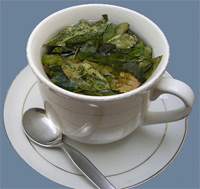 The tea we are offered at the airport, and again in our hotel lobby, is mate de coca—brewed from leaves of the coca plant. Coca is best known to North Americans as the source of the drug cocaine, which is actually a highly processed derivative of the coca leaf. Because of its association with the drug, coca is banned in the U.S.
The tea we are offered at the airport, and again in our hotel lobby, is mate de coca—brewed from leaves of the coca plant. Coca is best known to North Americans as the source of the drug cocaine, which is actually a highly processed derivative of the coca leaf. Because of its association with the drug, coca is banned in the U.S.
In the Andes, where it is legal, coca is an age-old tonic and a remedy for many ailments. It enhances mood, without dependency or toxicity; is a natural energizer, similar to coffee; is rich in vitamins and minerals; relieves dizziness, headaches and stomach problems; and aids in weight loss and child-birth.
Coca leaves can be chewed, brewed, smoked, or made into candy and baked goods. Shamans in the Andes smoke it for “magical” purposes—to enter the spirit world and to prognosticate the future in the tea leaves.
In the Incan empire, coca was considered to be very special, sometimes magical, and its use was controlled. After the conquest, the Catholic Church tried to forbid it, because of its ties to the old religion, but they found that in the high altitude without the coca, the natives had trouble working the fields and mining the gold, so the church itself cultivated the plants and distributed the leaves to the workers.
The world’s most popular coca product is Coca Cola™. Made from the extract of coca leaves mixed with kola nuts, it was created in 1885, and sold as a tonic. Coca Cola™ did contain cocaine (commonly used in 19th century patent medicines) until 1929! When it became known that cocaine was potentially harmful, the company had a problem. If it removed the coca from its recipe, could it still call its product Coca Cola™? On the other hand, if it did not remove the cocaine, there could be a boycott of the drink. Their solution was to devise an extraction process in which the coca leaves were ground, mixed with sawdust, soaked in bicarbonate of soda, percolated with toluene, and steam blasted. The result was then mixed with powdered kola nuts and pasteurized—preserving the taste while eliminating the drug effects. Pepsi™, by the way, does not use coca leaves in its recipe!
Today there are opponents and supporters of coca, but for visitors to Peru and other Andean countries, the tasty coca tea is a harmless antidote to the ills of altitude.

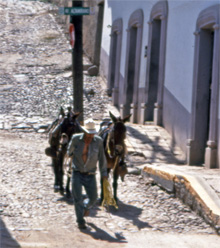 This is Batopilas, a small village located in Mexico’s Sierra Madres at the bottom of the deepest canyon in the vast complex of mountains and canyons known collectively as
This is Batopilas, a small village located in Mexico’s Sierra Madres at the bottom of the deepest canyon in the vast complex of mountains and canyons known collectively as 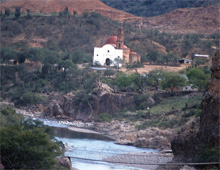 Three miles downstream from Batopilas, past an old suspension bridge, is a 400 year old Jesuit mission. The mission, recently restored, is known as the “Lost Cathedral” of Satevo, because over the course of time all records of it were lost by the Catholic Church.
Three miles downstream from Batopilas, past an old suspension bridge, is a 400 year old Jesuit mission. The mission, recently restored, is known as the “Lost Cathedral” of Satevo, because over the course of time all records of it were lost by the Catholic Church.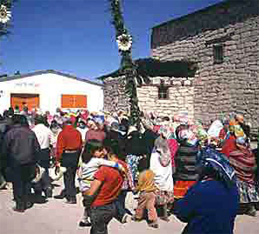 To begin to understand the Tarahumara ceremonies, one has to have a basic understanding of the Indians’ religion. The Tarahumara are outwardly Catholic, but their version of Catholicism is unlike any form we are familiar with.
To begin to understand the Tarahumara ceremonies, one has to have a basic understanding of the Indians’ religion. The Tarahumara are outwardly Catholic, but their version of Catholicism is unlike any form we are familiar with.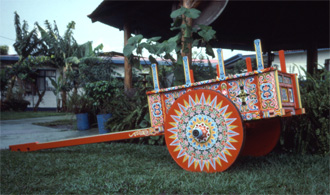 According to legend, around 1910 a farmer was suddenly inspired to spruce up the appearance of his oxcart. He painted the wheels with multi-colored designs. Others copied his designs and oxcart painting became a uniquely Costa Rican art form. At one time each district in the country had its own special design, and people could tell by looking at an oxcart what region it came from.
According to legend, around 1910 a farmer was suddenly inspired to spruce up the appearance of his oxcart. He painted the wheels with multi-colored designs. Others copied his designs and oxcart painting became a uniquely Costa Rican art form. At one time each district in the country had its own special design, and people could tell by looking at an oxcart what region it came from.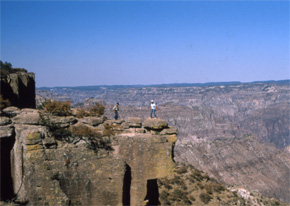
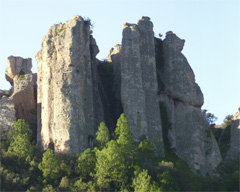
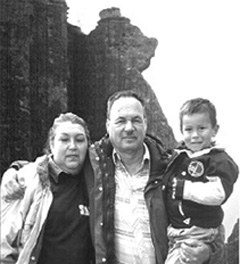 Born in a rural Ohio farming community, Doug has followed many diverse paths. He was an army sergeant, a NASA electrical technician, an editor, a deputy sheriff, a bodyguard, and now an inn keeper. His greatest passion is horses—he owns at least a dozen, and he brags that they are the best trained and equipped in Northern Mexico.
Born in a rural Ohio farming community, Doug has followed many diverse paths. He was an army sergeant, a NASA electrical technician, an editor, a deputy sheriff, a bodyguard, and now an inn keeper. His greatest passion is horses—he owns at least a dozen, and he brags that they are the best trained and equipped in Northern Mexico.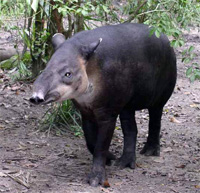 Tapirs are rather strange, primitive creatures. They are big animals—measuring about six to eight feet between their short little trunk and their stubby little tail, and weighing up to 700 pounds. Unlike elephants, who pick up food with their trunks, the tapirs move their trunks aside and browse like horses. Tapirs are the only animals native to the Americas which have four toes on their front feet and three toes on their hind feet.
Tapirs are rather strange, primitive creatures. They are big animals—measuring about six to eight feet between their short little trunk and their stubby little tail, and weighing up to 700 pounds. Unlike elephants, who pick up food with their trunks, the tapirs move their trunks aside and browse like horses. Tapirs are the only animals native to the Americas which have four toes on their front feet and three toes on their hind feet.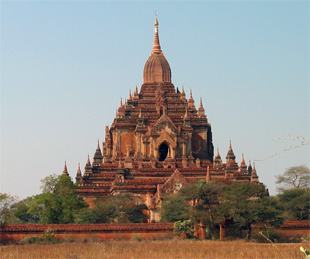 Located on forty square miles on the east bank of the Ayeyarwady River, 300 miles north of Yangon (Rangoon),
Located on forty square miles on the east bank of the Ayeyarwady River, 300 miles north of Yangon (Rangoon),  The Kingdom of Bhutan has set aside an area specifically for the yeti, the Sakten Wildlife Sanctuary—a sanctuary for a creature that local lore claims is invisible! While in Bhutan, I was told that not only is the yeti invisible, but his feet point backwards to avoid being tracked.
The Kingdom of Bhutan has set aside an area specifically for the yeti, the Sakten Wildlife Sanctuary—a sanctuary for a creature that local lore claims is invisible! While in Bhutan, I was told that not only is the yeti invisible, but his feet point backwards to avoid being tracked.